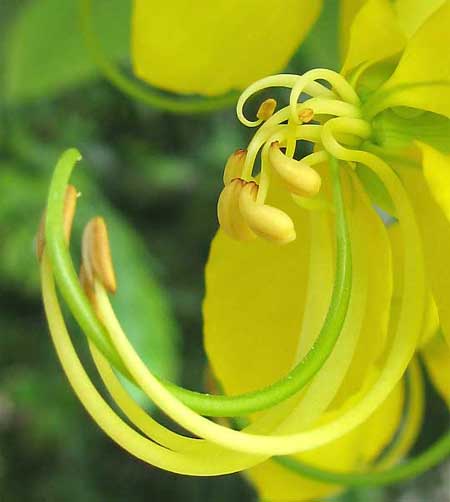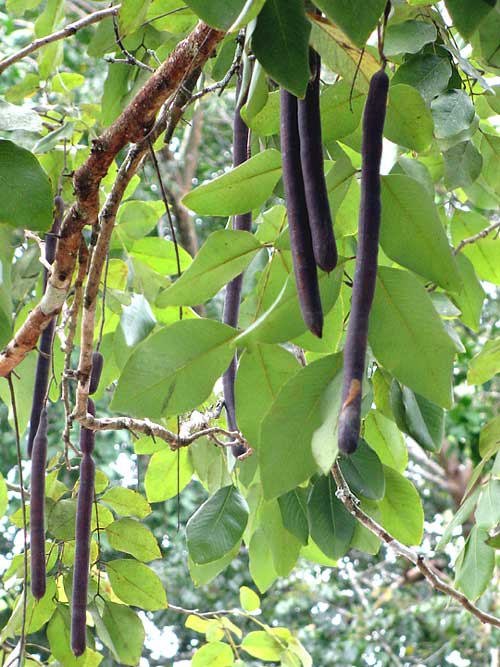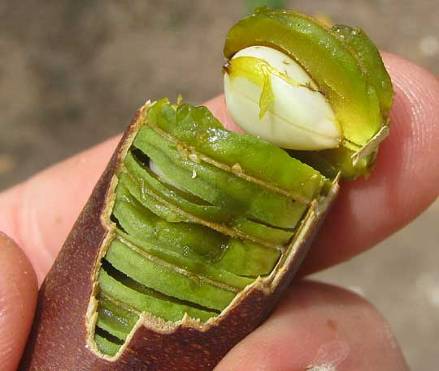 GOLDEN SHOWER TREE -
GOLDEN SHOWER TREE -Lluvia de Oro
 GOLDEN SHOWER TREE -
GOLDEN SHOWER TREE -Golden Shower Trees, Cassia fistula, are native to southern Asia. They are designated as Thailand's national flower. Planted throughout the tropics worldwide, in our area they catch our eye twice during the year.
The first time is toward the end of the rainy season, in September or so, when they adorn themselves with two-inch-wide (5cm), canary-yellow blossoms densely clustered in dangling, foot-long (30cm) racemes among handsome pinnate leaves, as shown at the right.

The long, slender, green, U-shaped item is the ovary -- the future fruit which, this being a member of the Bean Family, will be a legume. The other slender, curving, yellow items sprouting from the blossom's center are stamens consisting of curving, stalk-like filaments tipped with baglike anthers, which open to release powdery pollen.
The second time this tree catches our attention is during the late dry season, in March or so, when the slender, green ovaries in the above photo become dark brown, two-ft-long (60cm), dangling legumes, as shown below:

The ripe legumes are of special interest because they constitute an important part of the traditional pharmacopia, or body of information pertaining to medicinal plants, of many cultures -- not the Maya, however, since this is an introduced species. If you list all the pods' uses elsewhere you end up with such a list that you wonder if any cures work at all.
One use, however, is repeated so frequently that there must be something to it: The uncooked pulp of the pods cures constipation. A cracked-open pod showing greenish pulp between beans is shown below:.

The pulp tastes and smells a little like the "honey" in Honeylocust pods up North.